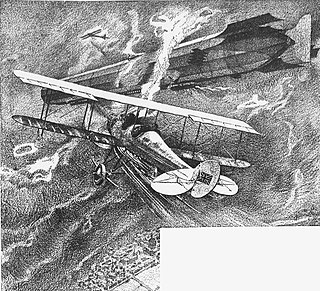 W
WThe Imperial German Army Zeppelin LZ 39 was an O-class World War I zeppelin.
 W
WThe Imperial German Navy Zeppelin LZ 47 was a P-class World War I zeppelin. Destroyed by enemy fire on 21 February 1916 in the Battle of Verdun, killing the crew of 15.
 W
WThe Imperial German Navy Zeppelin LZ 48 was a P-class World War I zeppelin.
 W
WThe Imperial German Navy Zeppelin LZ 53 was a P-class World War I zeppelin.
 W
WThe Imperial German Navy Zeppelin LZ 31 was a M-class World War I zeppelin.
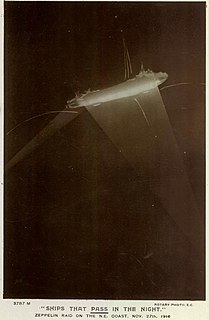 W
WThe Imperial German Army Zeppelin LZ 78 (L-34) was a R-class World War I zeppelin.
 W
WZeppelin LZ 89 was an R-class zeppelin of the Imperial German Navy. After a short career during the World War I it ran out of fuel during a mission and was deliberately crashed.
 W
WZeppelin LZ 95 was a U-class zeppelin of the Imperial German Military.
 W
WThe Imperial German Navy Zeppelin LZ 64, given the tactical number L 22, was a Q-class / L20-class World War I zeppelin of the Imperial German Navy.
 W
WThe Imperial German Navy Zeppelin LZ 112, given the tactical number L 70, was an x-class / L70-class World War I zeppelin of the Imperial German Navy.
 W
WOn July 30, 2016, sixteen people were killed when the hot air balloon they were riding in struck power lines, crashed and caught fire in the unincorporated community of Maxwell, near Lockhart, Texas, 30 miles (50 km) south of the state capital Austin. It is the deadliest ballooning disaster to ever occur in the United States.
 W
WThe Airship NS11 crash was an airship accident which occurred on 15 July 1919. The Royal Air Force (RAF) airship exploded off the east coast of England over the North Sea, killing all nine crew on board.
 W
WUSS Akron (ZRS-4) was a helium-filled rigid airship of the U.S. Navy, which operated between September 1931 and April 1933. She was the world's first purpose-built flying aircraft carrier, carrying F9C Sparrowhawk fighter planes, which could be launched and recovered while she was in flight. With an overall length of 785 ft (239 m), Akron and her sister ship Macon were among the largest flying objects ever built. Although LZ 129 Hindenburg and LZ 130 Graf Zeppelin II were some 18 ft (5.5 m) longer and slightly more voluminous, the two German airships were filled with hydrogen and so the US Navy craft still holds the world record for helium-filled airships.
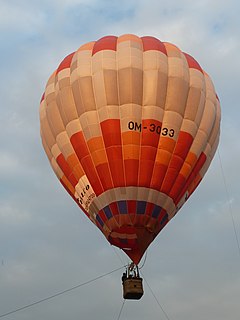 W
WOn 13 August 1989, two hot air balloons collided near Alice Springs, Northern Territory, Australia, causing one to crash to the ground, killing thirteen people. It was the world's deadliest ever ballooning disaster until February 2013, when a balloon accident near Luxor, Egypt killed 19 people. As of July 2016, it remains the deadliest ever ballooning accident in Australia, and the third-deadliest worldwide, surpassed only by the Egypt crash and a balloon accident in Texas in 2016 that left 16 people dead.
 W
WAndrée's Arctic balloon expedition of 1897 was an effort to reach the North Pole in which all three Swedish expedition members – S. A. Andrée, Knut Frænkel, and Nils Strindberg – perished. Andrée, the first Swedish balloonist, proposed a voyage by hydrogen balloon from Svalbard to either Russia or Canada, which was to pass, with luck, straight over the North Pole on the way. The scheme was received with patriotic enthusiasm in Sweden, a northern nation that had fallen behind in the race for the North Pole.
 W
WOn 7 January 2012, a scenic hot air balloon flight from Carterton, New Zealand, collided with a high-voltage power line while attempting to land, causing it to catch fire, disintegrate and crash just north of the town, killing all eleven people on board.
 W
WThe Dixmude was a Zeppelin airship built for the Imperial German Navy as L 72 and unfinished at the end of the First World War, when it was given to France as war reparation and recommissioned in French Navy service and renamed Dixmude. It was lost when it exploded in mid-air on 21 December 1923 off the coast of Sicily, killing all 52 on board. This was one of the first of the great airship disasters, preceded by the crash of the British R38 in 1921 and the US airship Roma in 1922, and followed by the destruction of the British R101 in 1930, the USS Akron in 1933 and the German Hindenburg in 1937.
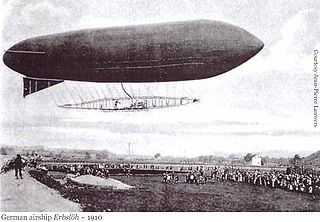 W
WThe Erbslöh was an airship named for the German aviation pioneer Oskar Erbslöh that was operational in the years 1909/10. In July 1910 the Erbslöh crashed near Leverkusen, killing all five people on board, including Oskar Erbslöh himself.
 W
WThe Helgoland Island air disaster occurred on 9 September 1913 after the airship Zeppelin LZ 14 had been transferred to the Imperial German Navy on 7 October 1912. As the first airship owned by the Navy, it was given the serial number L-1. Ordered to participate in manoeuvers, it departed the mainland in bad weather. With 20 people on board, L-1 flew into a gale, and, while 18 miles from its destination, the cold rain caused its gas to contract, causing it to settle 32 km; 17 nmi (20 mi) north of Heligoland into the North Sea, breaking in two. The control car sank, drowning 13 of its occupants. Seven were rescued by motor torpedo boats.
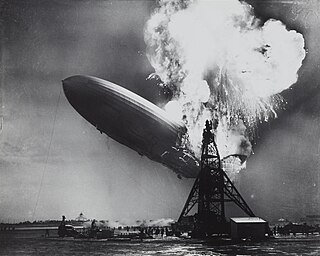 W
WThe Hindenburg disaster was an airship crash that occurred on May 6, 1937, in Manchester Township, New Jersey, United States. The German passenger airship LZ 129 Hindenburg caught fire and was destroyed during its attempt to dock with its mooring mast at Naval Air Station Lakehurst. The accident caused 35 fatalities from the 97 people on board, and an additional fatality on the ground.
 W
WThe Italia was a semi-rigid airship belonging to the Italian Air Force. It was designed by Italian engineer and General Umberto Nobile who flew the dirigible in his second series of flights around the North Pole. It crashed in 1928, with one confirmed fatality from the crash, one fatality from exposure while awaiting rescue, and the death of six crew members who were trapped in the still-airborne envelope. At the end of the rescue operations there were 17 dead.
 W
WThe Johannisthal air disaster was one of the first multiple-fatality air disasters in history. It involved the Imperial German Navy's L 2 airship manufactured by Luftschiffbau Zeppelin as LZ 18. Its test flight resulted in the death of all 28 passengers and crew on board. On 17 October 1913, at approximately 10:30am local time, hydrogen gas which was being vented was sucked into the forward engine and ignited causing the airship to explode and burn. It crashed near Johannisthal Air Field about 10 miles southeast of Berlin. This accident occurred a little over a month after the Helgoland Island Air Disaster.
 W
WThe Lebaudy République was a semi-rigid airship built for the French army in Moisson, France, by sugar manufacturers Lebaudy Frères. She was a sister ship of the Patrie, the main differences between the two being in the dimensions of the gasbag and the ballonet. Although she was operationally successful, the République crashed in 1909 due to a mechanical failure, killing all four crew members.
 W
WOn 26 February 2013, a hot air balloon crashed near Luxor, Egypt, killing 19 out of the 21 people on board. A fire developed in the basket due to a leak in the balloon's gas fuel system, causing the balloon to deflate mid-air and crash to the ground.
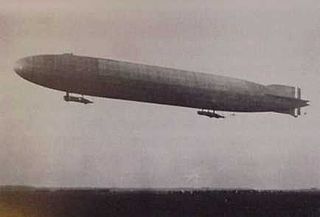 W
WZeppelin LZ 54, given the military tactical designation L 19, was a Zeppelin of the Imperial German Navy. While returning from her first bombing raid on the United Kingdom in early 1916, she came down in the North Sea. Her crew survived the crash, but drowned after the crew of a British fishing vessel refused to rescue them; at the time this was a widely reported and notorious incident.
 W
WProject Strato-Lab was a high-altitude manned balloon program sponsored by the United States Navy during the 1950s and early 1960s. The Strato-Lab program lifted the first Americans into the upper reaches of the stratosphere since World War II. Project Strato-Lab developed out of the Navy's unmanned balloon program, Project Skyhook. The program was established in 1954 and administrated by Commander Malcolm Ross. Malcolm Ross and others developed the program to accomplish research required for the manned rocket program to follow. This program provided biomedical data that was used for subsequent efforts in space. Malcolm Ross launched five numbered flights as well as other unnumbered flights.
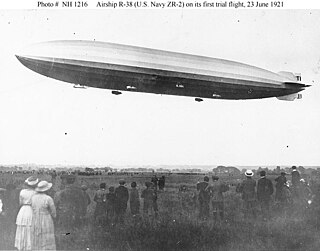 W
WThe R.38 class of rigid airships was designed for Britain's Royal Navy during the final months of the First World War, intended for long-range patrol duties over the North Sea. Four similar airships were originally ordered by the Admiralty, but orders for three of these were cancelled after the armistice with Germany and R.38, the lead ship of the class, was sold to the United States Navy in October 1919 before completion. On 24 August 1921, R.38 was destroyed by a structural failure while in flight over the city of Hull. It crashed into the Humber Estuary, killing 44 out of the 49 crew aboard. At the time of its first flight it was the world's largest airship. Its destruction was the first of the great airship disasters, followed by the Italian-built US semi-rigid airship Roma in 1922, the French Dixmude in 1923, the British R101 in 1930, the USS Akron in 1933, the USS Macon in 1935, and the German Hindenburg in 1937.
 W
WRoma was an Italian semi-rigid airship, originally designated the T-34. It was purchased by the United States from the Italian government for $250,000 in 1921. It served in the US Army until February 21, 1922, when it crashed in Norfolk, Virginia, killing 34 people. It was the last hydrogen filled airship flown by the US military; all subsequent ships were inflated with helium.
 W
WUSS Shenandoah was the first of four United States Navy rigid airships. It was constructed during 1922–1923 at Lakehurst Naval Air Station, and first flew in September 1923. It developed the U.S. Navy's experience with rigid airships and made the first crossing of North America by airship. On the 57th flight, Shenandoah was destroyed in a squall line over Ohio in September 1925.
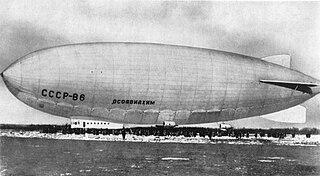 W
WSSSR-V6 OSOAVIAKhIM was a semi-rigid airship designed by the Italian engineer and airship designer Umberto Nobile and constructed as a part of the Soviet airship program. The airship was named after the Soviet organisation OSOAVIAKhIM. V6 was the largest airship built in the Soviet Union and one of the most successful. In October 1937, it set a new world record for airship endurance of 130 hours 27 minutes under command of Ivan Pankow, beating the previous record by the German airship Graf Zeppelin.
 W
WThe Wingfoot Air Express was a non rigid airship, or blimp that crashed into the Illinois Trust and Savings Building in Chicago on Monday July 21, 1919. The Type FD dirigible, owned by the Goodyear Tire and Rubber Company, was transporting people from Grant Park to the White City amusement park. One crew member, two passengers and ten bank employees were killed in what was, up to that point, the worst dirigible disaster in United States history.
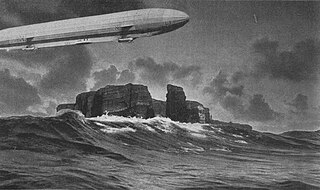 W
WZeppelin LZ 14, given the navy tactical number L 1, was a rigid airship built for the Kaiserliche Marine to carry out reconnaissance over the North Sea and enemy territory. It was first flown on 7 October 1912. On 9 September 1913, LZ 14 was on a patrol over the North Sea when it encountered a thunderstorm, which resulted in a forced landing/crash. 14 crew-members drowned, becoming the world's first ever Zeppelin casualties.
 W
WZeppelin LZ 38 was Zeppelin P Class airship of the German Imperial Navy. It was the first to bomb London, United Kingdom.
 W
WZeppelin LZ 55 was a P class Zeppeling of the Imperial German Army in World War I. It was shot down by the old British pre-dreadnough battleship HMS Agamemnon in 1916 during Salonika campaign
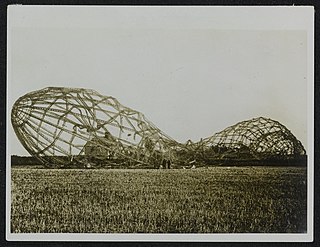 W
WThe Imperial German Army Zeppelin LZ 76 (L-33) was a R-class World War I zeppelin.
 W
WThe LZ 85, tactical number L 45, also known as Zeppelin of Laragne by the French public, was a World War I R-Class zeppelin of the German Navy that carried out a total of 27 flights, including 3 raids on England and 12 reconnaissance missions.